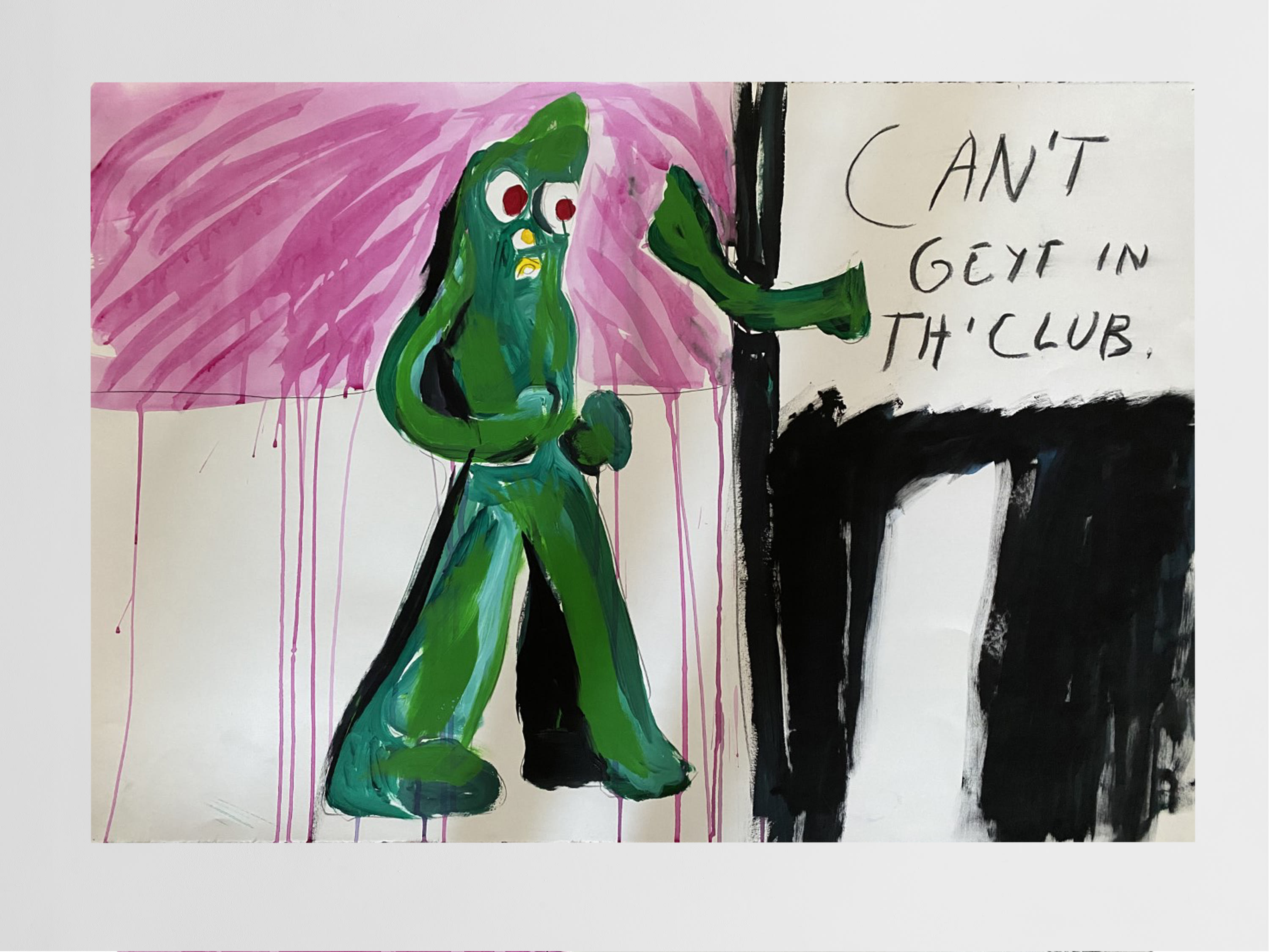Survivor Series comprises seven new drawings by Raymond Pettibon and marks the third iteration in HOMEWORK, our new series of online exhibitions featuring work from the homes and studios of artists during the isolation period.
Pettibon’s work addresses an enduring array themes, extricating particular cues and ephemera from modern American popular culture, politics and history – ranging from literature, cartoons, sports, surf culture, Americana, societal and sexual norms and references drawn from art history. Existing at the intersection between painting, illustration and language, Pettibon’s drawings acclimate precise scenes and visual cues with handwritten texts (some original, some found) often instilling them with a multiplicity of meaning and poignant social critique.
The symbiotic tension between image and text is characteristic of Pettibon’s practice. His drawings are populated by quotations, aphorisms and poetic fragments of dialogue that act to deepen and refract the sensibility of the image, often due to the obtuseness of their connection. In No Title (Well, that’s my…), politely articulated remarks are offset against the intensity of the collaged pornographic scenes formed in rapid brush strokes of fleshy pink and black, energised by vigorous spatters of ink. In another, I love Vertebrates, the import of the text carries possible social inflections, while the abstraction of the composition resists narrative resolution. The particularity with which these free-floating, seemingly ambivalent, statements interact with the imagery emphasises the potency at play between language and image in the construction of narrative and the potential for humour, satire and revelation that is created by these unlikely couplings. Pettibon has commented on the interconnectedness of image and text in the making of his drawings:
It’s not that exact, as if I dream in images and my waking thoughts are in text, or as if my daydreams become my captions and illustrations. I don’t know if it’s good to separate the two too much actually. But yeah, one depends on the other. There’s always a latent or inferred image in my writing. And I can almost always assume if I do a drawing that it will eventually have text. Now, I can only take this so far, because it’s almost starting to sound like an apology for writing, as if it’s this impurity imposed on the visual image. In art, impurity is not a mortal sin. You have to navigate through it. I say that only because there’s not too many of my drawings that don’t have text. There are some, but not many. If I were doing cartoons it would be a lot easier.
– In conversation with John O’Connor, The Believer, 2005
